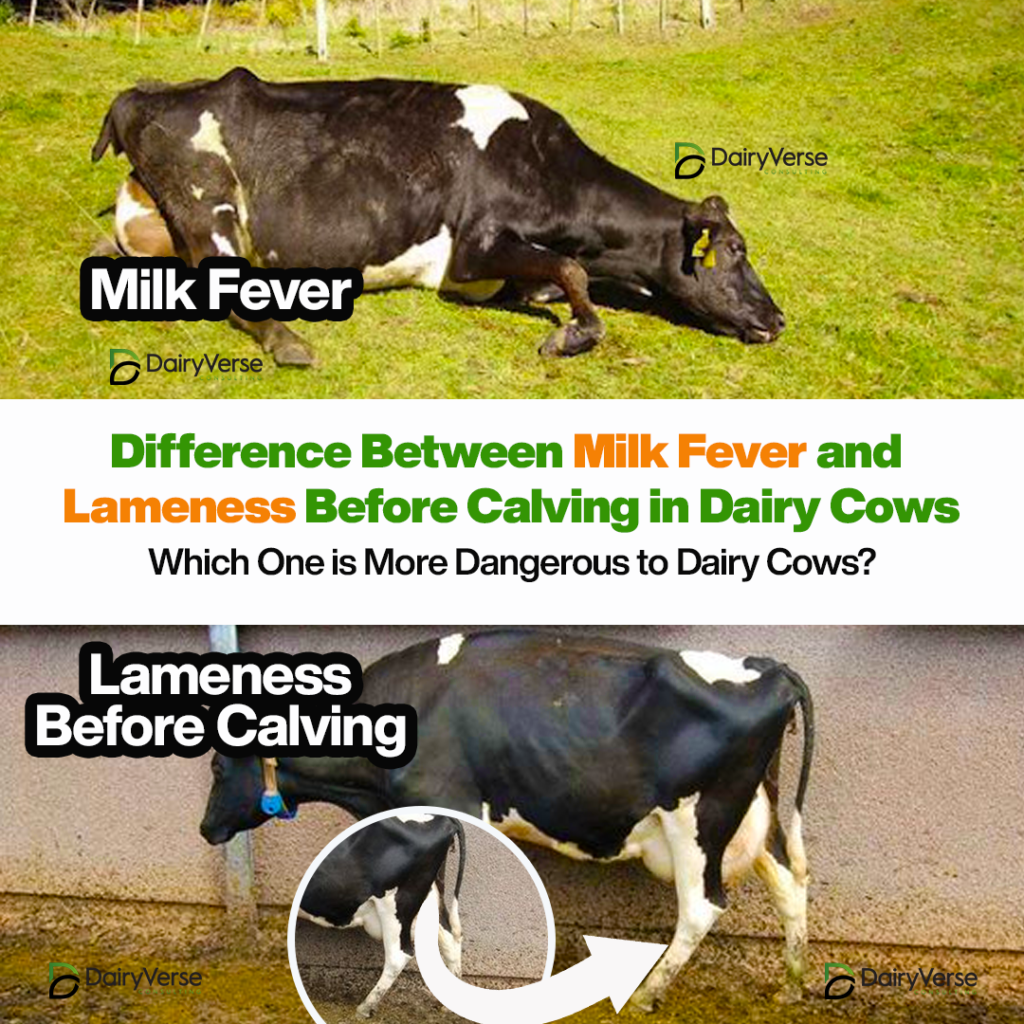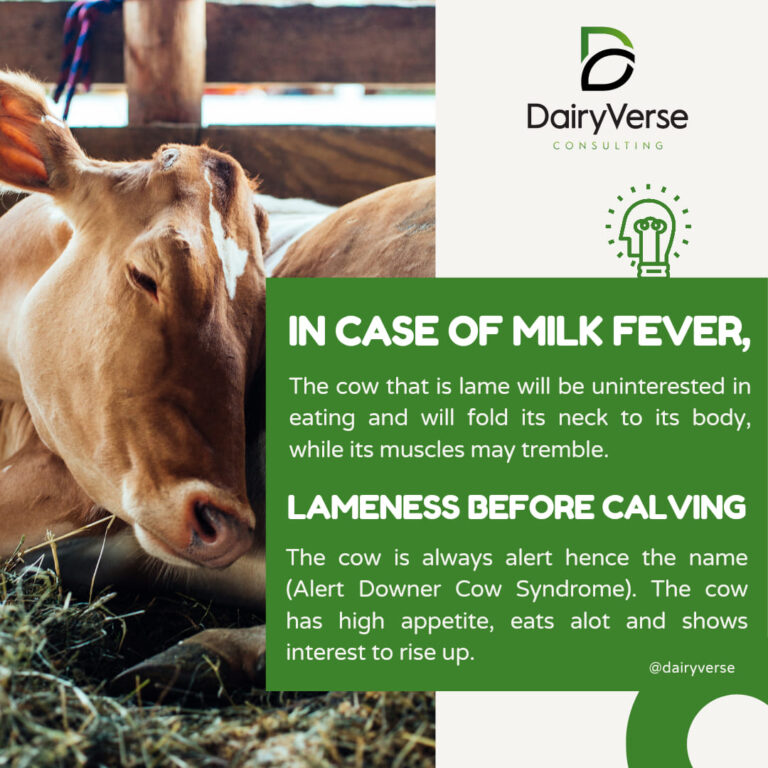Understanding Milk Fever and Lameness Before Calving in Dairy Cows

Milk fever and lameness are two significant health issues in dairy cows, especially around the time of calving. Though they may seem similar due to some overlapping symptoms, they have distinct causes and require different treatments. This article will explain these conditions, highlighting their differences, causes, symptoms, and potential solutions.
1. Milk Fever in Dairy Cows
What is Milk Fever?
Milk fever, also known as hypocalcemia, is a metabolic disorder that commonly occurs in high-producing dairy cows around the time of calving. It is caused by a sudden drop in blood calcium levels, which is needed for muscle function and other physiological processes. When calcium is rapidly drained for milk production, it can lead to a deficiency, affecting the cow’s overall health.
Symptoms of Milk Fever
- The cow is often weak and uninterested in eating.
- It may fold its neck to its body and lie down, unable to rise.
- Muscle tremors and twitching can also occur due to calcium deficiency.
- The cow’s body temperature may drop, and in severe cases, it could lead to coma or death if not treated promptly.
Causes of Milk Fever
The primary cause of milk fever is a sudden decrease in blood calcium levels, often triggered by the demands of lactation after calving. Factors that can increase the risk include:
- High levels of potassium in the diet before calving.
- Insufficient calcium intake during the dry period.
- Older cows or cows with a history of milk fever are more susceptible.
Treatment and Prevention
- Calcium Supplementation: Administer intravenous calcium immediately to raise blood calcium levels, followed by oral calcium supplements to stabilize the condition.
- Diet Management: Feeding a low-calcium diet in the dry period encourages the cow’s body to adjust to the increased calcium demand post-calving. Also, reducing dietary potassium levels can help.
- Mineral Balancing: Ensure a balanced diet with appropriate levels of magnesium and phosphorus to support calcium absorption.
2. Lameness Before Calving
What is Lameness Before Calving?
Lameness before calving, often linked with “Alert Downer Cow Syndrome,” occurs when a cow is unable to stand or walk comfortably, despite having a good appetite and alert demeanor. This condition is usually due to physical injury, muscular strain, or nerve damage caused by the weight and pressure of a growing fetus in late pregnancy.
Symptoms of Lameness Before Calving
- The cow appears alert and responsive, with a strong appetite.
- It shows interest in getting up but struggles due to pain or weakness in the legs.
- It may attempt to stand but is unable to bear weight on one or more limbs.
Causes of Lameness Before Calving
This type of lameness is often due to:
- Pressure on the sciatic nerve or other nerves in the hind legs, caused by the weight of the calf.
- Muscular or ligament strain, especially in high-producing dairy breeds that carry heavy calves.
- Injuries sustained from slipping or improper footing in the barn.
Treatment and Prevention
- Pain Management: Anti-inflammatory medications can reduce pain and swelling, helping the cow attempt to stand.
- Supportive Care: Regularly turn the cow to prevent muscle atrophy and bed her on soft, dry bedding to minimize discomfort.
- Exercise and Comfort: Ensure cows have a non-slip, well-bedded area to lie down and move around comfortably. Regular hoof trimming and maintaining proper flooring can help reduce risks.
- Proper Calving Management: Monitor cows closely during late pregnancy and calving, providing assistance if needed to avoid strain.
Differences Between Milk Fever and Lameness Before Calving
| Feature | Milk Fever | Lameness Before Calving |
|---|---|---|
| Primary Cause | Calcium deficiency post-calving | Nerve damage, muscular strain, or injury |
| Symptoms | Weakness, muscle tremors, lack of appetite | Alert, good appetite, but difficulty standing |
| Onset | Usually around or shortly after calving | Primarily in late pregnancy, before calving |
| Immediate Action | Calcium supplementation | Pain relief and supportive care |
| Long-Term Solution | Dietary management during the dry period | Proper care during pregnancy and calving |
Conclusion
Milk fever and lameness before calving are challenging conditions for dairy cows, requiring attentive management to ensure the well-being of the animal. Understanding their differences, causes, and treatments can help farmers act promptly and effectively, ensuring a healthy calving period and post-calving recovery. By implementing dietary adjustments, pain management, and proper calving care, farmers can minimize the risks associated with these conditions, improving overall herd health and productivity.







